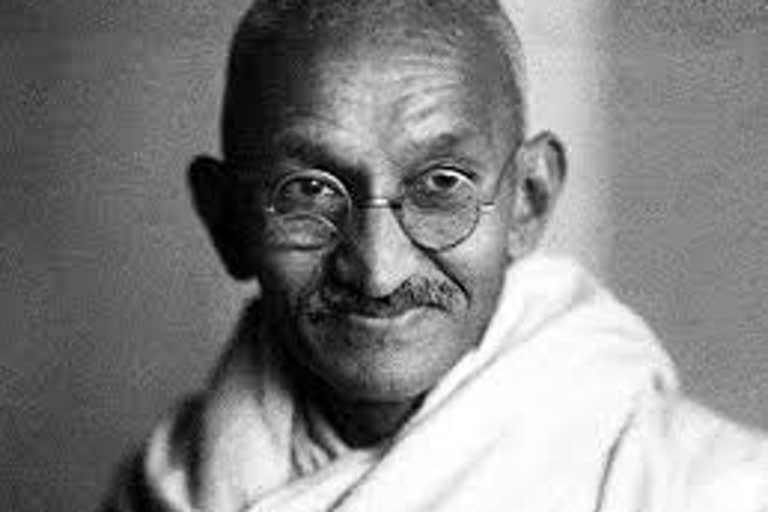Hyderabad: Ramachandra Guha said, “Gandhiji’s biggest contribution to the upliftment and emancipation of women was enlisting them in social and political agitations.”
YES, Gandhiji brought women, who were hitherto confined to kitchens, into the Indian freedom struggle. Now, all over the world, including our country, politics are run by (muscular) men. “Contrary to this Gandhi encountered muscular British force with ‘womanhood’ weapon,” says Ruchira Gupta, a women activist. Yes, this is true.
The inspiration behind the non-violent satyagraha movement were his mother Putli bai and wife Kasturbai. Bapu used to recall that he received lessons from them in non-cooperation movements. He enlisted a large number of women as non-violent activists, first in South Africa and later in Indian Freedom Struggle.
He transformed Congress Organisation, which had so far, confined itself just to submitting petitions, into a vast platform for people’s movement. In that process, he inspired and encouraged women, in unparalleled numbers, to participate in those movements.
Two important changes have taken place with women entering public life. One, they were activated, second because of working with women activists, there was marked change in the thought process of men. They have, thus, learnt to respect women as equals.
Bapu inspired women to participate in agitations in South Africa ashrams and other agitations. Women stood by the largest mine workers strike.
In India, Gandhiji’s first struggle was in Champaran, where out of the 25 volunteers, there were 12 women in the struggle of farmers. This new era struggle that started here extended to Salt Satyagraha, Dalit emancipation, Quit India agitation and marched forward more effectively.
In 1919 Gandhi led Ahmedabad textile industry workers' strike; whereas another important, Anasuya Sarabhai led 1921 Civil Disobedience agitation, where women participated in large numbers. Their role in burning foreign-made goods, Swadeshi Movement etc., was noteworthy.
Bapu believed that when women, who constitute 50 percent of the population, participate, any movement would be successful. He used to say that when the weakling (abala) turns to be a strong person (sabala), the helpless becomes a strong person.
Women enthusiastically participated in social movements like charkha weaving, cotton clothes preparation. Bapu used to say that women can become independent financially too, when they weave charkha.
Gandhi played an important role in making Sarojini Naidu the first woman president of Congress in 1925. Even in progressive parties such as the British Labour Party, the American Democratic Party, women could not become leaders at that time.
This is a very notable point. When elections were held, as per 1919 act, Gandhiji encouraged, women to participate in them.
In 1931, with the spirit of Gandhiji, Congress passed a resolution demanding equal rights for women, irrespective of their education and designation. It may be noted that several countries even in Europe had not accorded women the Right to Vote.
Gandhiji gave equal preference to independence and social movements and started Harijan Development Yatra in 1933. The chief aim of this tour was to inspire the society towards providing equal rights to Dalits who were being treated as 'untouchables'.
Women stood by him in this yatra. In his national tour, including Andhra Pradesh, women gave away their on-body ornaments as a donation.
Several women participated in Dandi Satyagraha and got arrested.
Kasturbai Gandhi, set out from Sabarmati Ashram with 37 women volunteers and prepared salt, violating the law. Sarojini Naidu, Kamala Devi Chattopadhyay and others played a lead role.
Muslim women participated in Khilafat non-cooperation movements. Muslim women were not following the purdah system while with Gandhiji, which is reflective of their confidence and faith in him.
In 1942, Gandhi gave a call for “Quit India”. British government pounced on them. Even then, women did not retreat. Aruna Asaf Ali played an active role in this movement.
Usha Mehta ran a secret radio. Not just in agitations, subsequently women were appointed as ministers and governors too.
Even in Constituent Assembly (for drafting the Constitution) there were women members (Raj Kumari Amrit Kaur, DurgabaiDesmukh).
Our Constitution provided for the voting right of women. It was not allowed in several developed countries at that time.
Several women, inspired by Gandhiji participated not only in the freedom movement in large numbers and also served long prison terms.
Gandhiji’s influence provided new energy and impetus to women development. Since they participated in social movements, their respect grew among the men.
The awareness on the problems of women, their rights and national movement have grown.
Gandhiji said, “Untouchability and discrimination of women, are two social evils that are affecting Indian society.” He used to say, “If a man studies only he acquires education, but if a woman is educated, it amounts to education of the whole family and the society.”
“Only by empowering women, a society without exploitation is possible.”
Freedom movement has dented discrimination based on caste, religion and gender.
In fact, Satyagrahis used to eat food cooked by Dalit women. Women got enlightened because of Gandhiji, and he too acquired independent viewpoints from the agitating women. He himself had confessed this several times.
Not heeding to people’s advice, Gandhiji sent Abha Gandhi as his emissary to a village in religious riot-affected place near Nau Kali.
Mridula Sarabhai swung into action to rescue a girl who was kidnapped in the post-independence riots. She openly declared that she had acquired such courage from Gandhi himself.
As written by several historians, more women participated in freedom movement than in the revolutions of Russia and China.
Gandhiji was the motivation and inspiration behind all such acts pertaining women's emancipation. If anyone in the ashram was ill, Gandhiji himself would serve them.
Manubehn Gandhi, a close aide of Gandhi, wrote a book “Bapu my mother”.
Thus, we can see that Gandhiji was an inspiration for women’s participation in the national movement.
Also Read: Mahatma Gandhi's contribution to 'communal harmony'



